INTRODUCTION
This text constitutes a first publication on the subject of my experience with images generated via AI over the past year and the application of this experience to an exhibition project. It will be followed by a second one that will continue and complete the subject. Each one will be posted via Substack in a French version and in an English version.
The first part of the text below gives an account of my experience with images generated via artificial intelligence over the past year, and the second details my research work, still in progress, for the exhibition called "Dans la Vallée de l'Étrange" (In the Valley of the Strange), which will be held for the Juin Jardins festival in Cahors in the south of France at the Best Western Hotel from June 2nd.
1. SYNTOGRAPHY
More than a year ago, as I was preparing to devote myself again to the regular publication on the internet of my photographic journal, I started to get interested in images generated by artificial intelligence. I had no idea at the time that my interest in the subject would become the subject of an exhibition for me the following year, for the simple reason that despite the qualitative leap made since the relatively early beginnings in this field, the results were rather unsightly. I was initially only attracted by the humorous, grotesque and vaguely psychedelic qualities of the first images I saw.
I did some testing with DALL-E mini in the summer of 2022 that went in the direction of the bizarre and somewhat disturbingly comic.
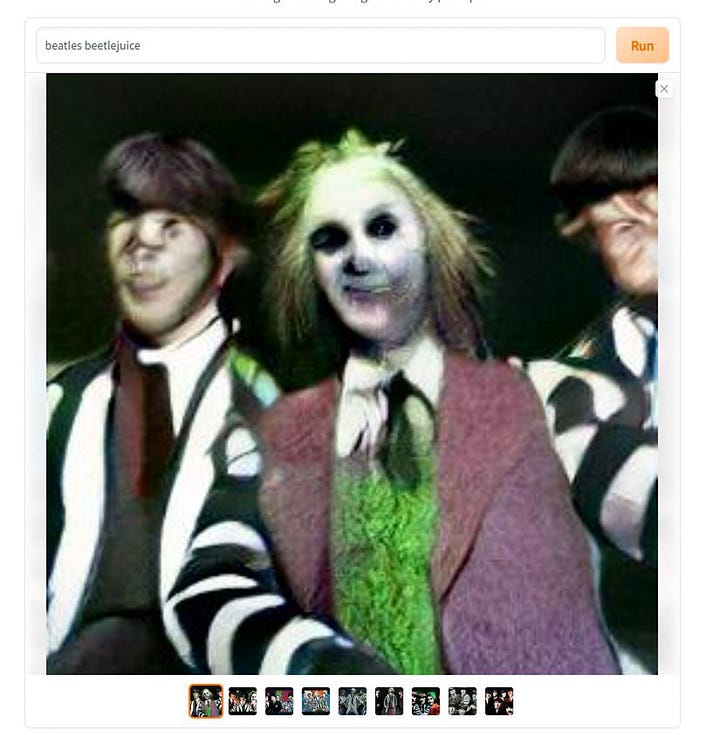
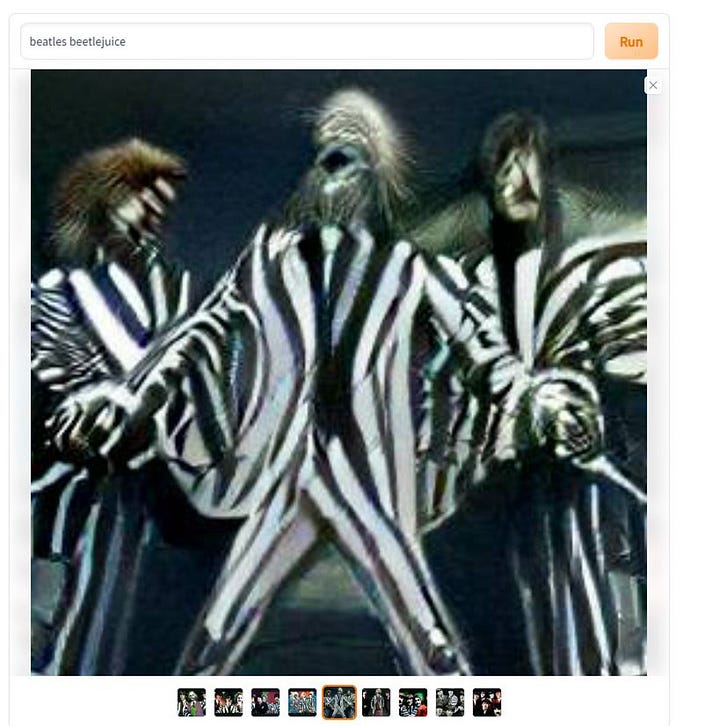
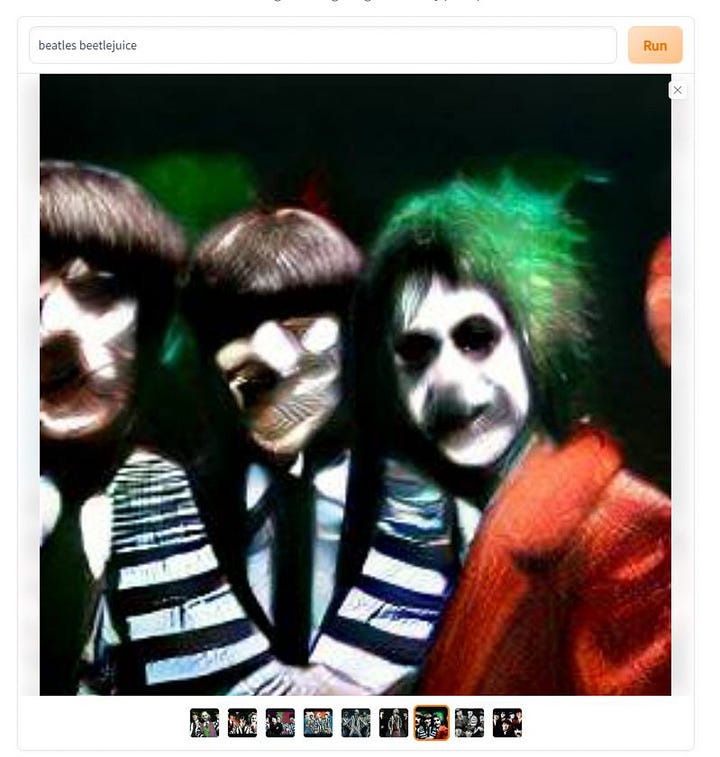
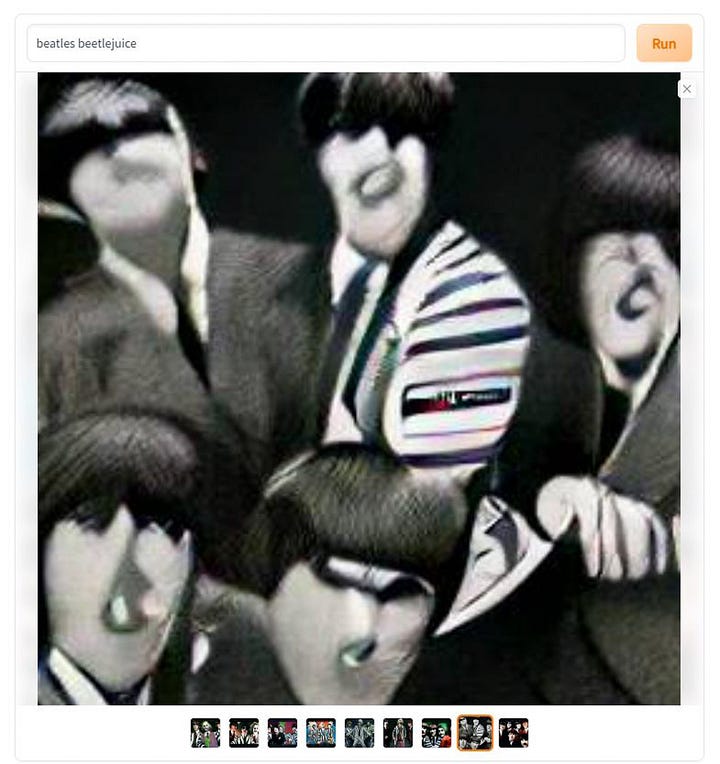
My interest was elsewhere anyways. I spent several years focused on film and video making, and I gradually realized that I wanted to bring together all the fields I had worked in over the years, photography, video, music, writing.
The return to regular publication of photos shot in my everyday environment, and edited into series, had become possible again for me because I had found a way to show these photo sequences accompanied by short semi-biographical essays in a regular journal on Substack, something I had never considered before. So it was the possibility of using the language associated with the images that made me want to show photos again.
During the summer of 2022, I was amazed to see the qualitative explosion of image-generating AI, made possible by the open source release of Stable Diffusion. It was amazing to see how it had become possible to generate strikingly realistic images, improving week by week, just from words, at an impressive speed.
I remember when I started to see convincing faces and pleasing textures.
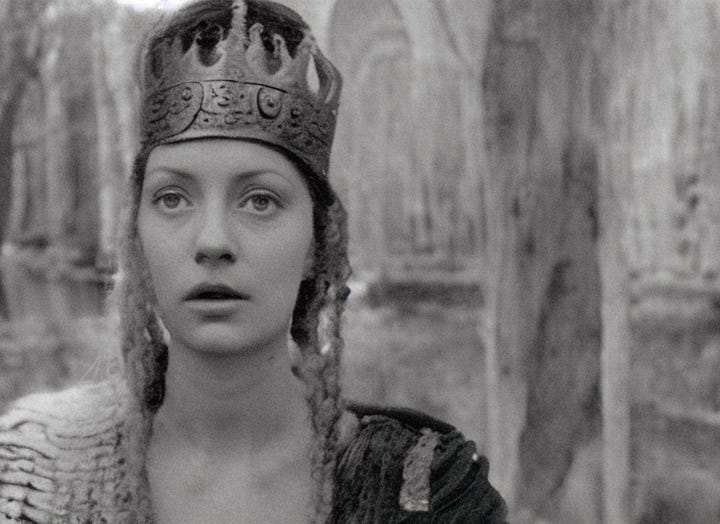

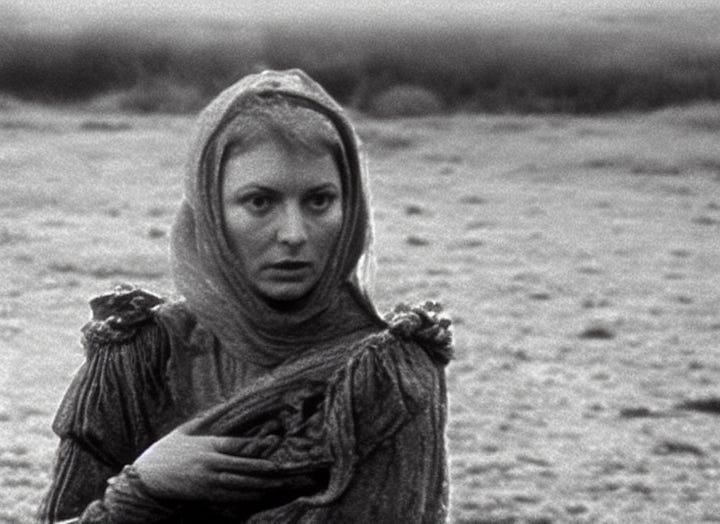
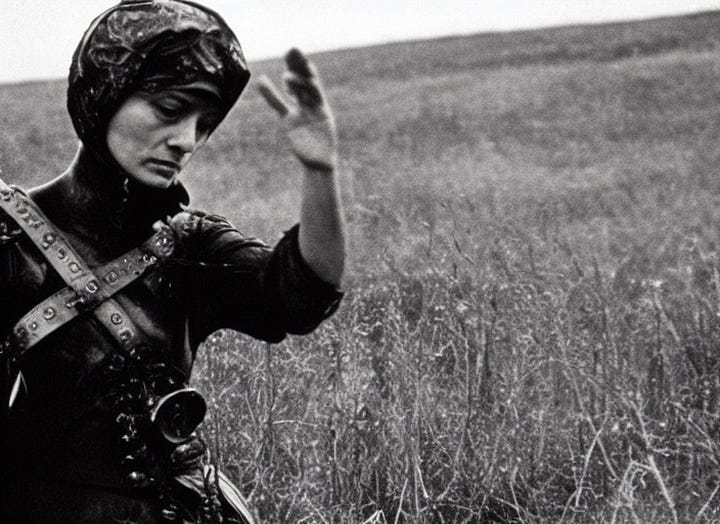
My first attempts intrigued me about the language to use, and how the machine understood or didn't understand the words and sentences I gave it, as well as how it interpreted the instructions. This kind of computer-assisted synaesthesia made me think of Rimbaud and his poem Vowels. I cut the poem into six prompts and sent them in English as a request to Stable Diffusion 1.2 in September 2022.
1. A black, E white, I red, U green, O blue: vowels,
I shall tell, one day, of your mysterious origins:
2. A, black velvety jacket of brilliant flies
which buzz around cruel smells,
Gulfs of shadow;
3. E, whiteness of vapours and of tents,
lances of proud glaciers, white kings, shivers of cow-parsley;
4. I, purples, spat blood, smile of beautiful lips
in anger or in the raptures of penitence;
5. U, waves, divine shudderings of viridian seas,
the peace of pastures dotted with animals, the peace of the furrows
which alchemy prints on broad studious foreheads;
6. O, sublime Trumpet full of strange piercing sounds,
silences crossed by [Worlds and by Angels]:
–O the Omega! the violet ray of [His] Eyes!
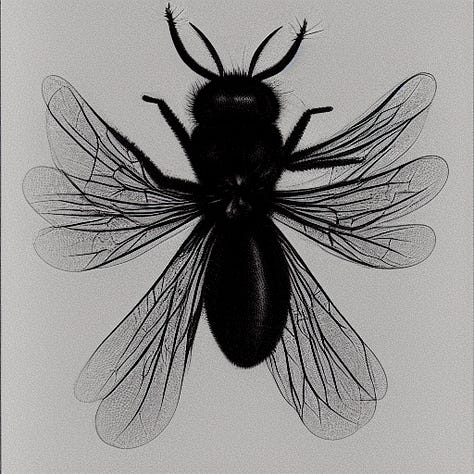




I realized that to get personal results, you have to use a unique personal language. I think there is a certain poetry of the prompt, which I hope will not fade away in future versions.
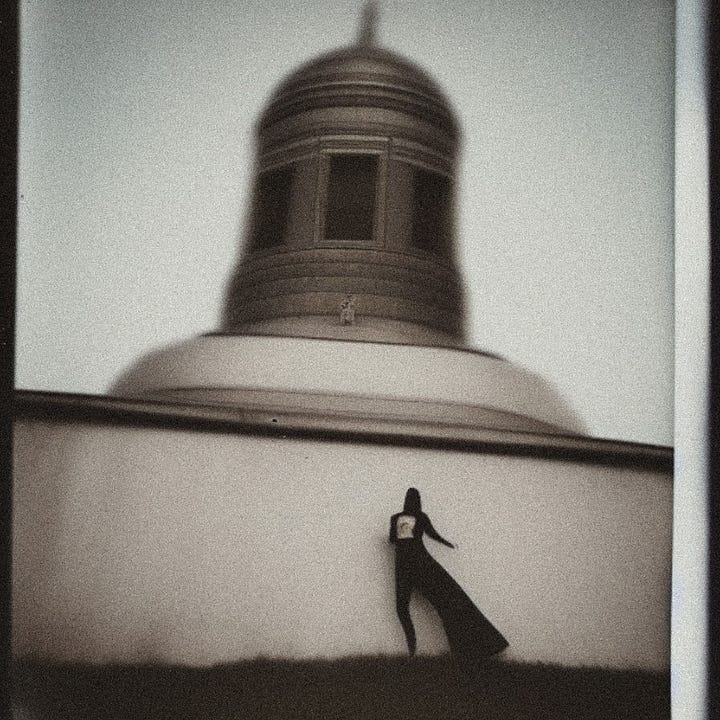
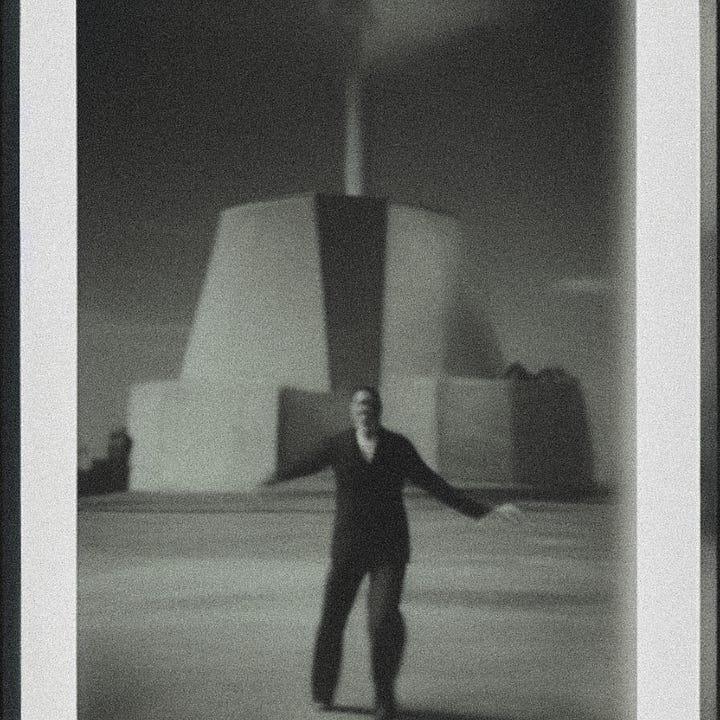
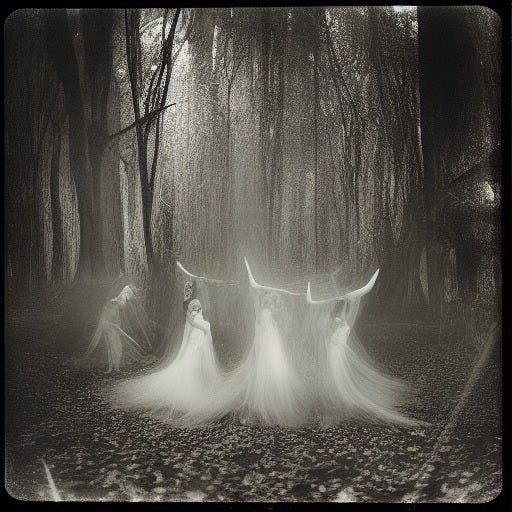
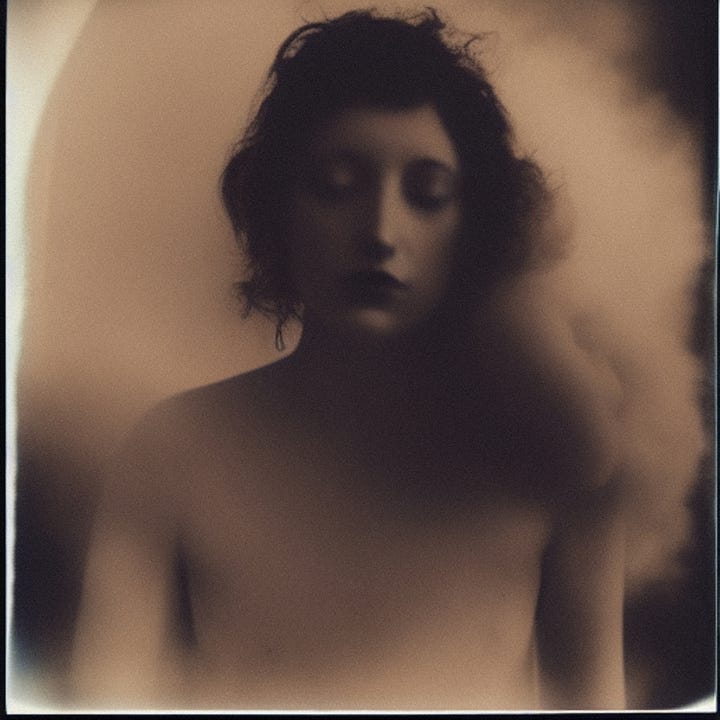
I also enjoyed seeing the happy mistakes created in the images, which I see disappearing little by little with already a slight nostalgia.
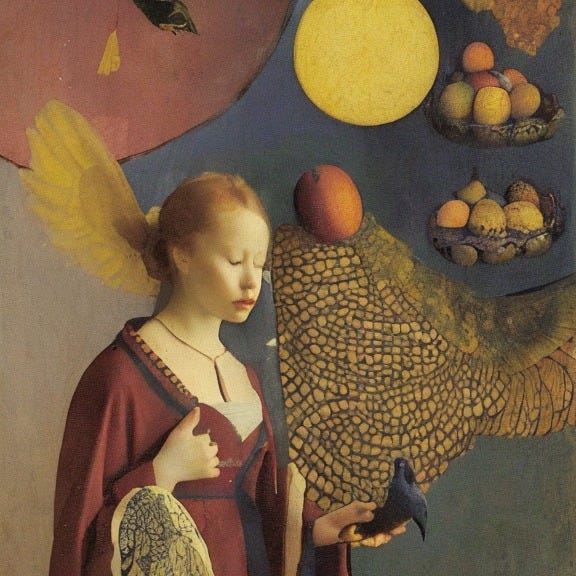
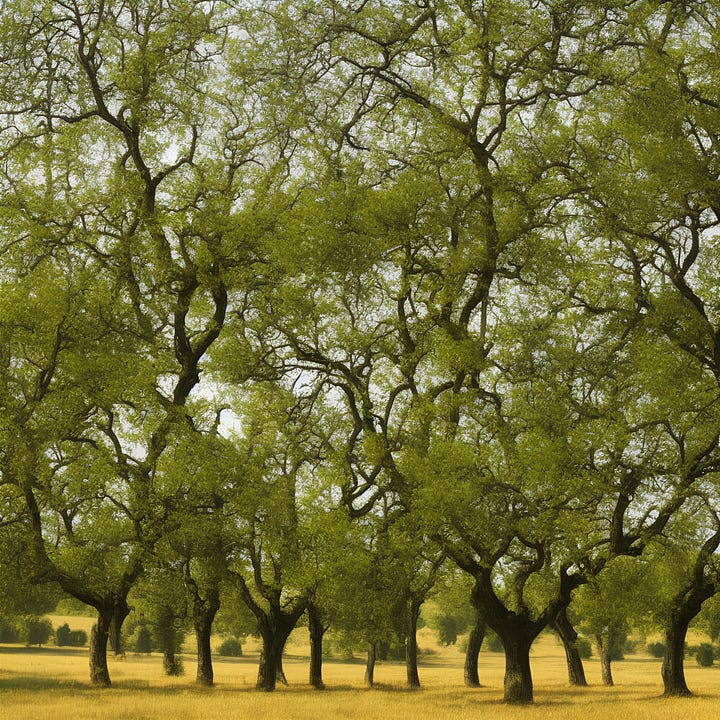
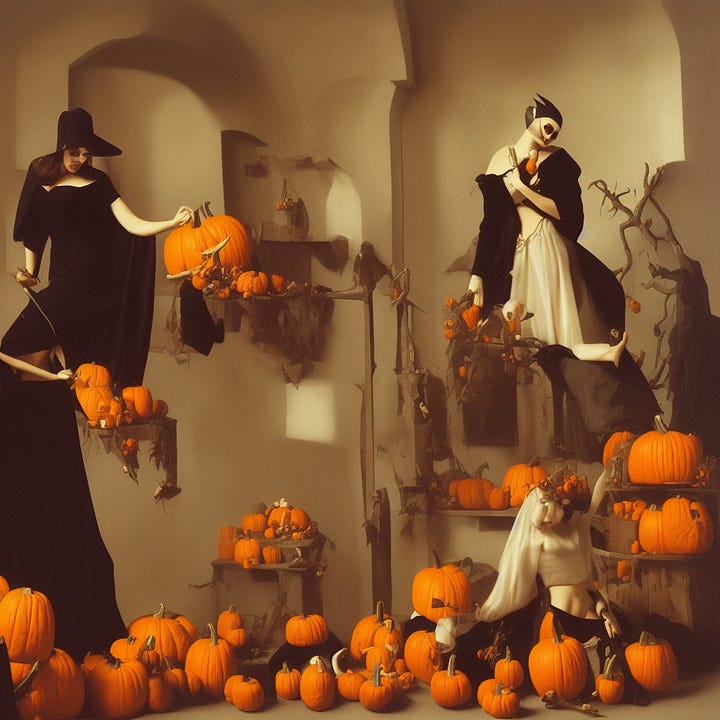
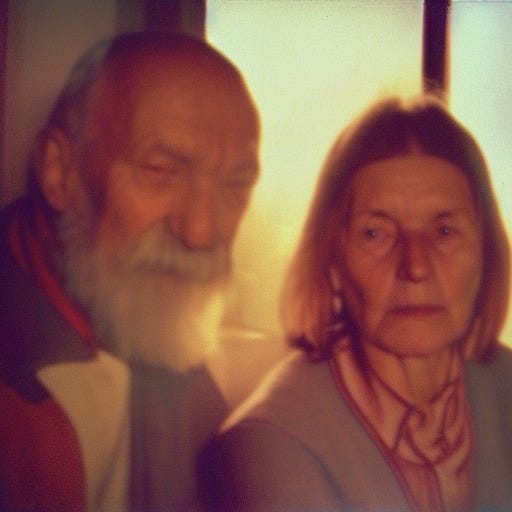
After a year of practice, I am at the stage where I think that the most significant evolution is simply the possibility to create photorealistic images from simple words, a privilege formerly reserved to cinema. Discussions about the emergence of generative AIs often seem to focus on the technical aspect, sometimes on the philosophical aspect, most often on the practical aspect, but more rarely from this angle.
The creation of images from words is a privilege that image-generating AIs share with cinema and thus have a kinship with description in film scripts, and it is curiously this association of words and images in two parallel domains to which I have devoted a year.
So on the one hand I found myself working on my diary, with a particular attention to the veracity of the photos, essentially unretouched, with a conscious effort of editing, to preserve a part of mystery reflecting my ever-renewed astonishment in front of the world, and in parallel, I found myself refining my prompts to create images that I found to be aesthetically similar to my usual work, except that they contained ghostly, unreal, fantastic, grotesque elements, such as it is impossible to encounter in the real world.
The image-to-image modifications created apparitions. By graduating the quantity of imagination injected into the image, one moves the image further or further away from its source and from reality.
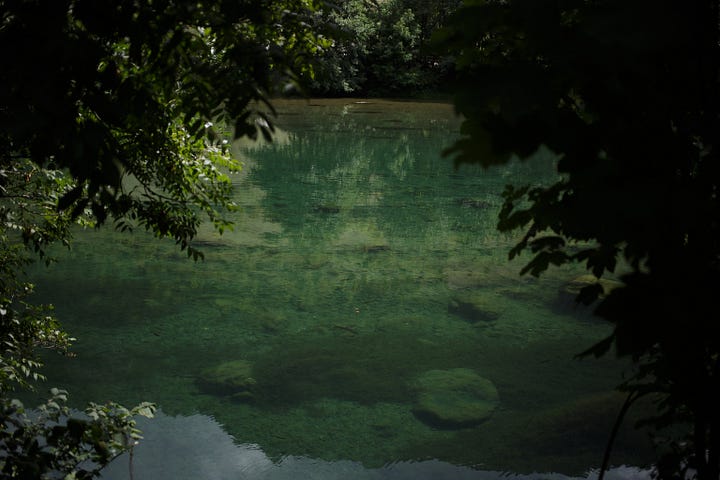
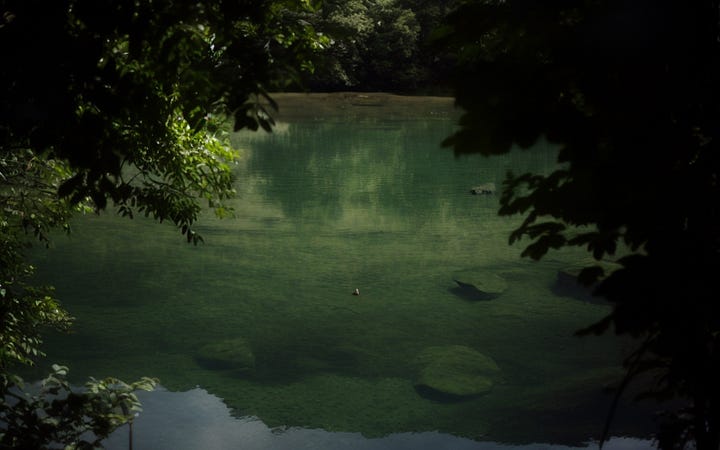
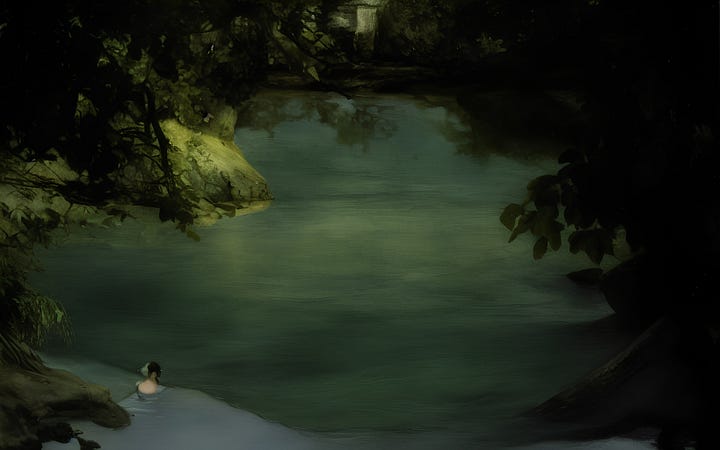
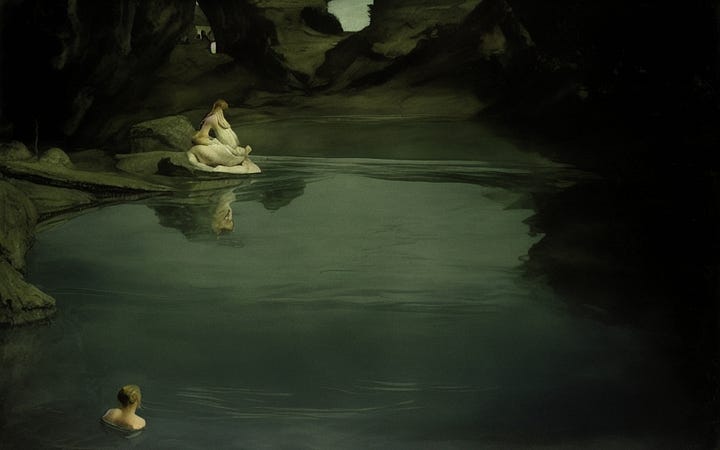
What I decided to call "synthography", following Julie Wieland, to differentiate it from photography, thus appeared to me as a new possibility of expression for me, in no way in competition with photography as I practice it.
I conceive photography as a practice of presence and attention to the world, of empathy, of intuition, of body language, of the subtle changes in mood linked to the passing of the seasons, a perpetual quest to capture the elusive with sometimes the miraculous surprise of succeeding, rarely. Synthography is this fantastic digital creativity, which is an imperfect revelation, at the same time marvelous and worrying, artificial and addictive, of the inner world of those who use it, and which carries in it both the hope and the anxiety of technical revolutions.
No digital practice will replace the pleasure I get from photographing my children in the light of the setting sun as I realize I'm getting older, but I can attempt to represent the symbolic ghosts I've been observing through my lens for over twenty years with synthography without having been able to fix them on film or digital media until now.
Synthography is therefore not a witness of the external world but of the interiority and of the collective imagination, and in my opinion it only has real artistic value as long as it is dedicated to what is specific to it.
It is thus in this state of mind that I approached the current project which will be shown in the form of an exhibition with the exhibition of June 2 in Cahors.
2. THE GARDENS OF THE VALLEY OF THE STRANGE
This project for Cahors Juin Jardins consists in confronting naturalist photography and synthography in a project entitled "Into Uncanny Valley.
The “Uncanny Valley” is a theory of the roboticist Masahiro Mori in 1970 which states that the closer a robot's appearance is to a human being, the more affinity we feel for it, up to a certain point of mimicry where it becomes extremely disturbing, until the similarity with the human being is at the (still theoretical) point that the distinction becomes impossible and thus at the maximum point of affinity. This brutal fall of the affinity due to an incomplete similarity with the human being is represented in this diagram in the form of a valley, which gave its name to the theory and inspired that of this work.
The idea I had was to use this disturbing, very obvious quality of the AI images in the garden-related project that Cahors Juin Jardins commissioned me to do, but along the way, the cursor in the valley moved to the right as the software was updated, and I found myself with tools that had a very strong visual verisimilitude and a more subtle strangeness. I decided to use these features to try to reimagine what I would find in the gardens.
The Cahors Juin Jardins festival has been around for almost twenty years. It started as a garden festival and became an art festival linked to nature. I was asked, as it approaches its 20th anniversary, to produce an exhibition that explores the private gardens that the owners open to the public each year and that are one of the pillars of the festival through photography and synthography and thus to question the nature of these images by confronting them with the domesticated nature of each hortus conclusus participating in the festival.
The idea for me is to pay homage to the nature of these gardens by proposing a parallel vision, ravishing or disturbing, or both, and yet anchored in their own reality.
I waited until I finished a first sequence of seven gardens to present my work in progress on this subject.
I'm giving you a look at the process in progress, but I'm saving the surprise of the nature of the images on display for the June 2 exhibition.
THE GARDENS
For each garden I propose on the left a photo that I took in the garden and on the right a synthesis generated from the photo on the left.
GARDEN 1 : Garden side
I went to the first private garden that was opened to me by N.H. She welcomed me warmly and we had the surprise to discover common ancestors, she on her mother's side and I on my father's side. N. maintains a garden which has four sides: a rather Asian part, another one a little more exotic, a part devoted to vegetables and succulents which is a kind of vegetable garden, and a fourth part which presents a tree, a cherry tree in flower decorated with feathers. She told me that one of the trees was a "cloud tree" and showed me bits of driftwood in which she sees bird heads. She is working on collages and assemblages of wood in the shape of a bird, as part of a theme she has set for herself this year: the bird.
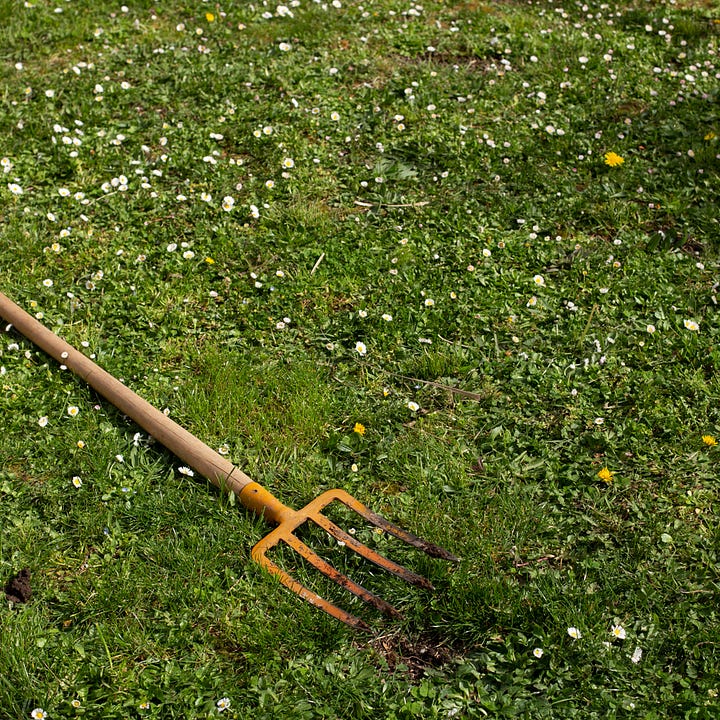

GARDEN 2 : The non-standard garden
I went to D.G.'s second garden that I visit for my project. This is a garden above the cliff overlooking the river Lot. Like many of the gardens on this street, it is a long garden that stretches between the street and the sheer cliff. It's a garden that gets a lot of visitors in the summer because D. is an artist and there are many visitors who come to see her paintings. She is also very active on Instagram. Like many of the visitors she hosts, I started the garden tour by tasting a plant that tastes very oyster-like, at least at first because the vegetal side comes back afterwards as I noticed.
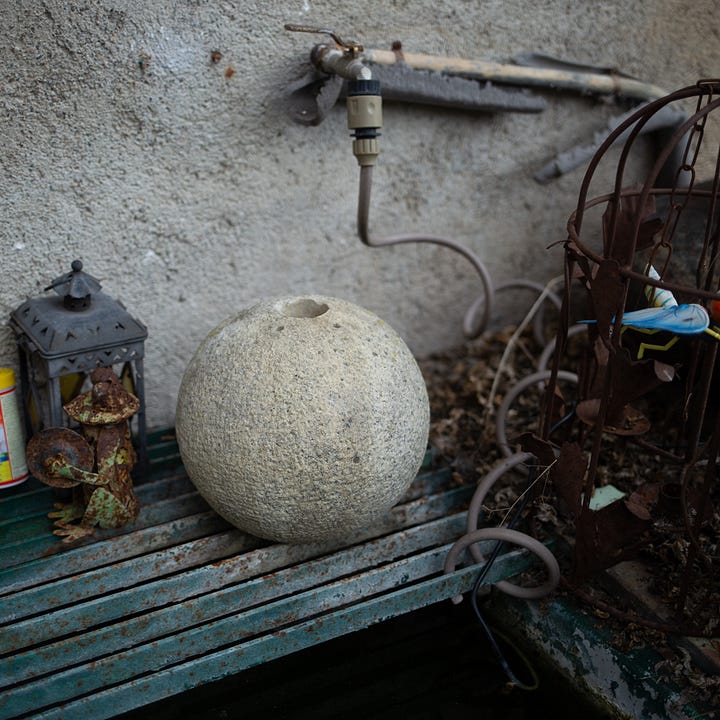

GARDEN 3 : The garden at the end of the road
For the shots of the third garden, I went to the house of S.C., who lives in a house with a garden overlooking the station. It is a beautiful garden, carefully maintained. When I arrived, the wisteria was in full bloom and the forsythia was in full bloom, looking like a burning bush. As is often the case with photography, there are things that seem obvious when you arrive at a place and see them, but there are things that only reveal themselves after patient observation, and that was the case in this garden. I think I took the most interesting pictures after 45 minutes of observation, under the feline eyes of Nouchka.
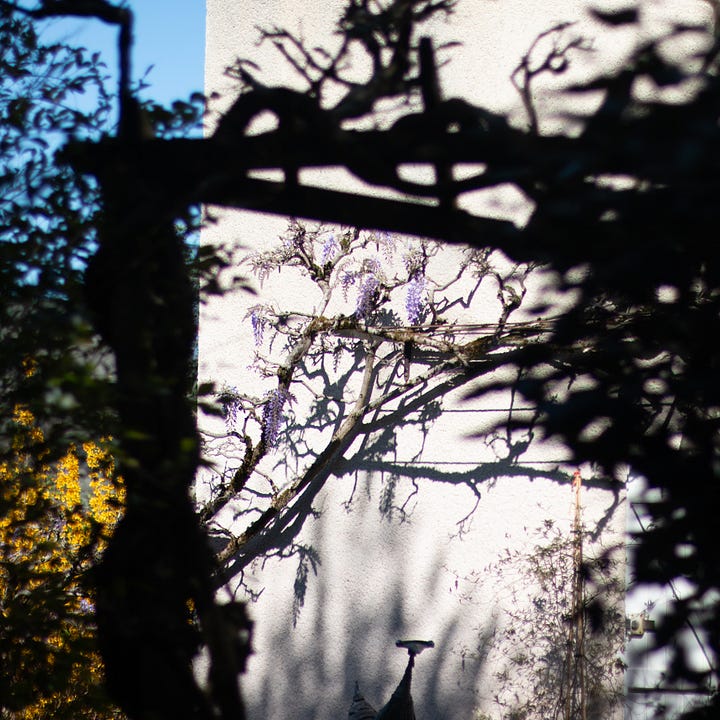
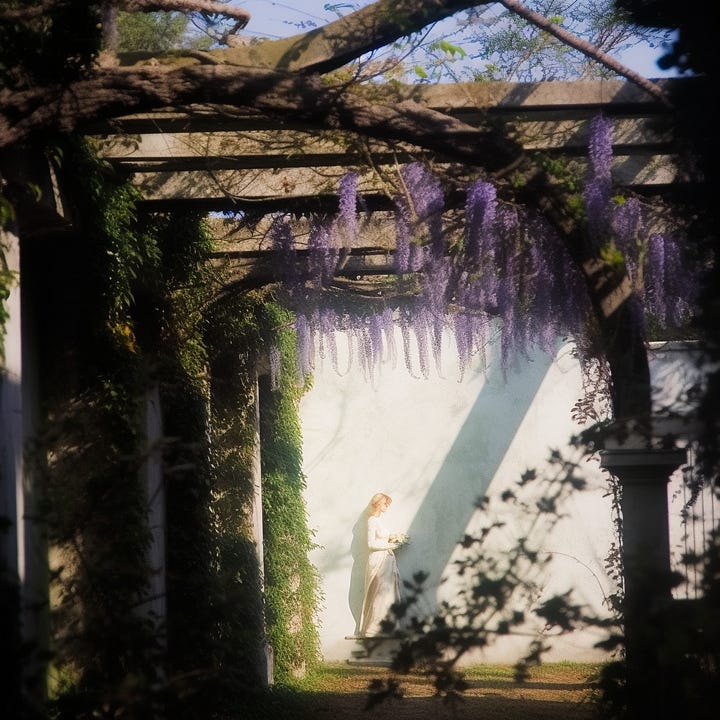
GARDEN 4 : The garden of the Lagrive house
The fourth garden, that of D.C., is particular in the sense that it is an exhibition space dedicated to the sculptures of Marc Petit. Although I have taken pictures of the very beautiful sculptures of this talented sculptor, I chose to try to take this garden in what it had of singular apart from the sculptures themselves. I don't want to use Marc Petit's sculptures in my work, because I don't want to distort them, since my work will not consist of a faithful rendition of the works I have in front of me. But I had an idea, under the gaze of Frida the cat, which you will discover in June.
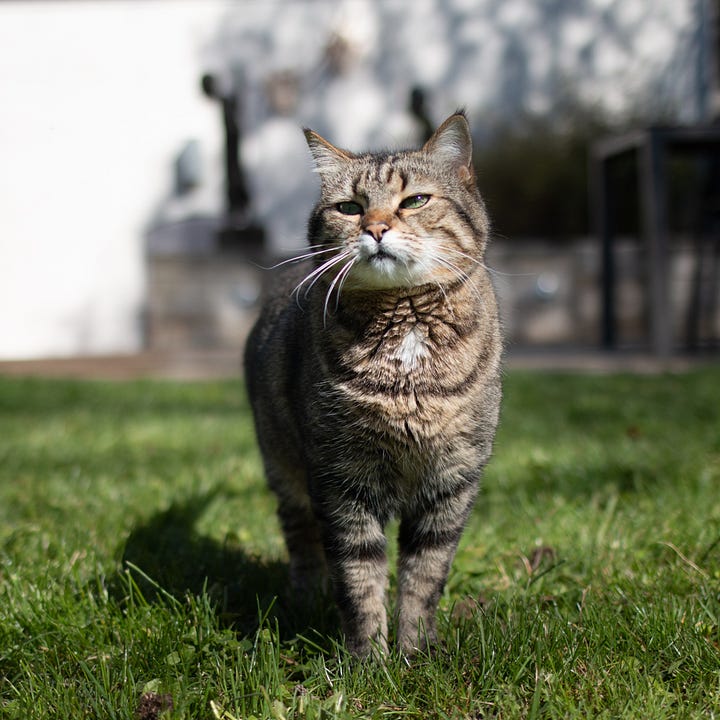

GARDEN 5 : The hide and seek garden
The fifth garden is the garden of V.P.L., who welcomed me in a friendly way and with whom I chatted for a while and met his dog Octave. It is easy to understand why it is called the hide-and-seek garden, because it is found at the end of a passage, after an entrance behind a gate. It is full of different places where I imagine one can sit to think, have a drink on summer evenings or a coffee, sheltered from the sun. Plants grow everywhere and my gaze is lost in a hedge where a shrub with yellow flowers blends in. Secrets seem to be present everywhere, obvious but invisible at first glance.
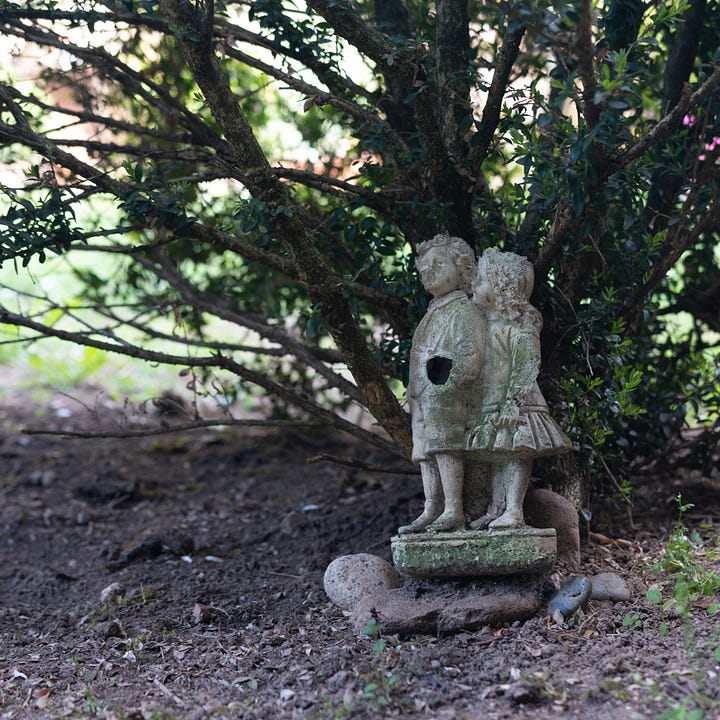

GARDEN 6: The Greenhouse Garden
The sixth garden is unique in that it is located in an adult day hospital and is situated in the grounds of an old house, in whose garden it is nice to sit and rest. In this ideal setting, patients also have access to an old-fashioned greenhouse, a place I particularly like the atmosphere. When I came, N. was working on covering a wood and textile structure with a natural fiber knit. The idea is to offer a human-sized cocoon where you can go, find yourself and be reborn on the other side. In the greenhouse, I thought I saw a Lilliputian world revealing itself to me.
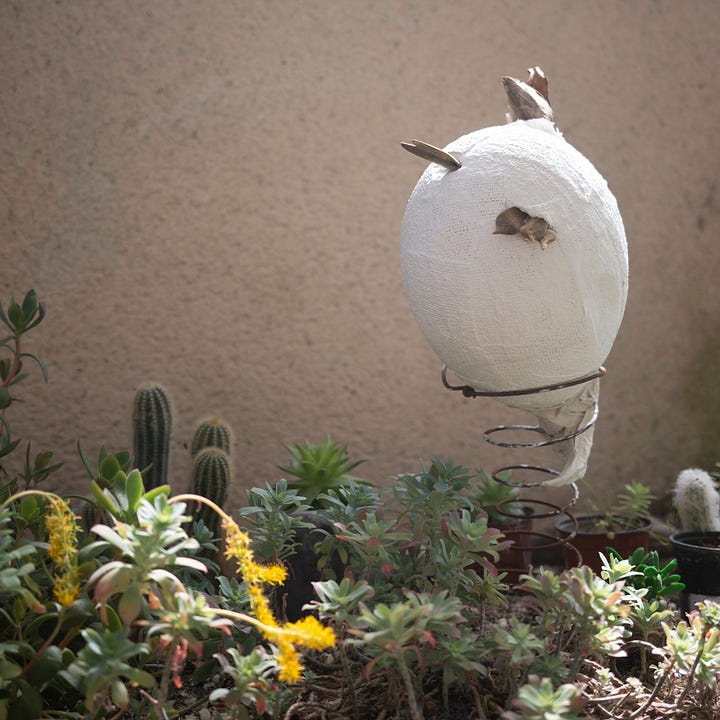

GARDEN 7 : The High Garden
The high garden has the particularity of being located above E.A.'s apartment. It is a very singular garden, leaning against the cliff, which offers an unobstructed view of the old town of Cahors. The light is capricious and it is very cold in winter and very hot in summer. She who lives there devotes herself to words and writing, especially of women. In the cliff, she told me, you can often hear wild boars and wild animals moving around at night. A narrow, mossy staircase leads to a station above. The house and its neighbors, lined up so wisely when seen from the other side, from the city, are on this side a network of paths that go up and down, narrow stairs between hanging gardens. A small cabin hides secrets that can be seen through the windows. The flowers are open everywhere, only the wisteria above the garden table is not yet open, probably for lack of sun.
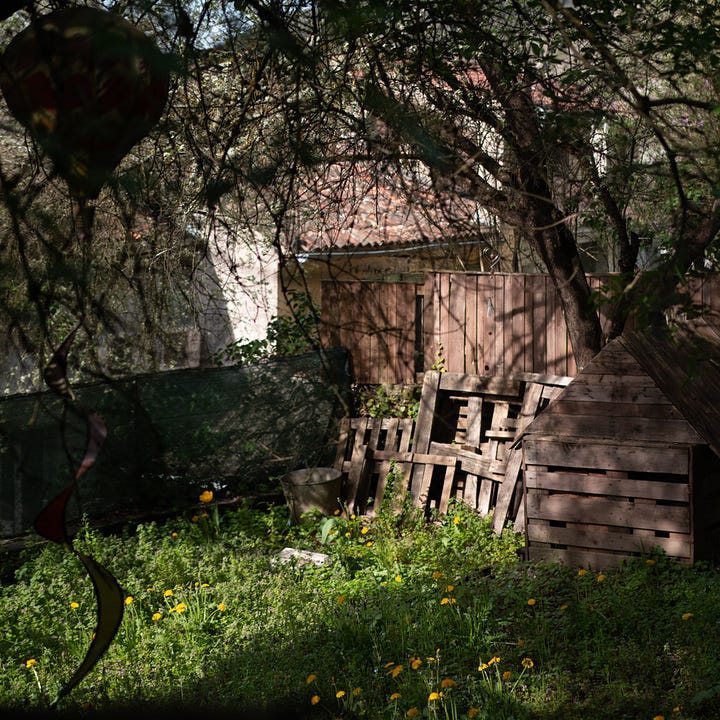
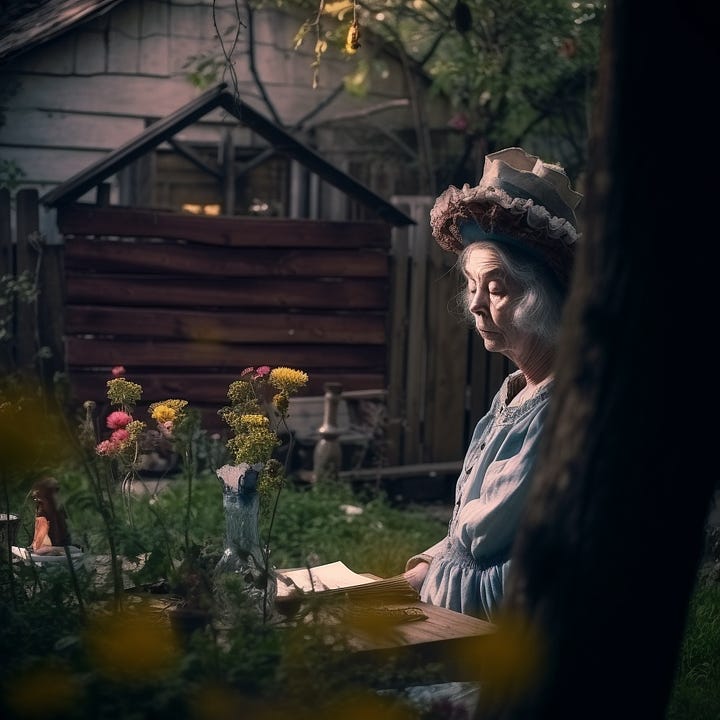
Thus ends the first part of this publication. The next one will be published in an undetermined future but I hope it will be close. In the meantime, you can find me on Twitter, where I am active, as well as on Facebook where I am present. And if you want to follow the news of the project on Cahors Juin Jardins, I invite you to subscribe to their Instagram and Facebook pages.
Alain
twitter.com/alainastruc
facebook.com/alainastruc
Cahors Juin Jardins
instagram.com/cahorsjuinjardins
facebook.com/CJJ46
The exhibition "Into Uncanny Valley" will take place from June 2 at the Best Western Divona Cahors hotel in the south of France.


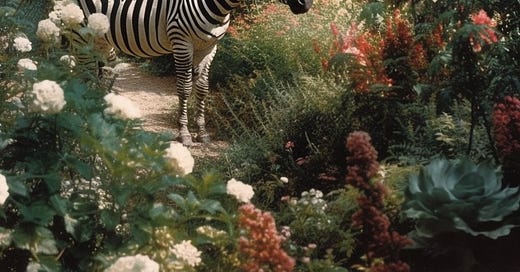


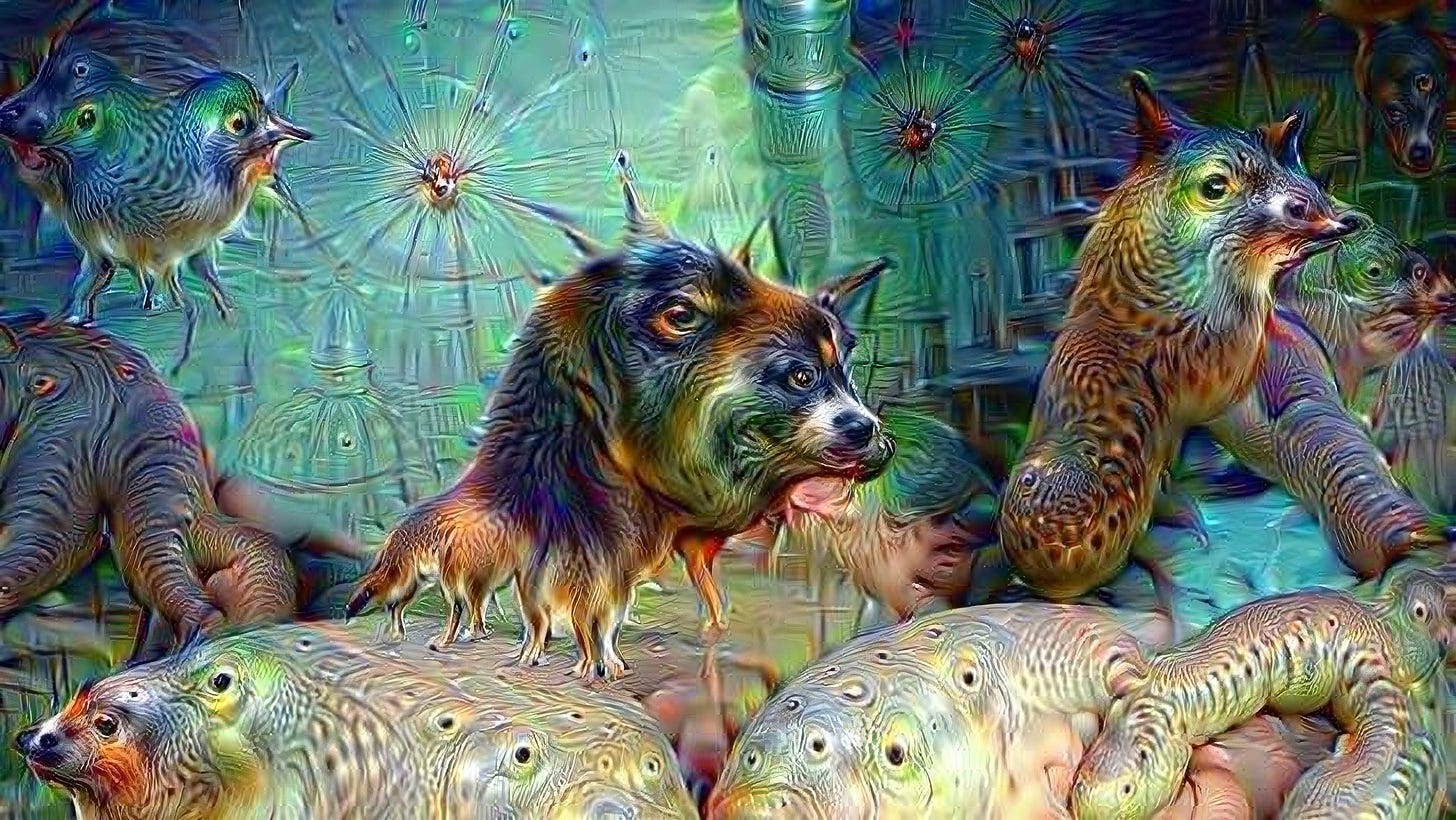

Never heard of the theory of the “uncanny valley”, but man it is so perfect for this theme. Incredible! Thank you for sharing. Really enjoyed this weeks newsletter!
Synthology…wow! Your work has me rethinking AI-generated art.